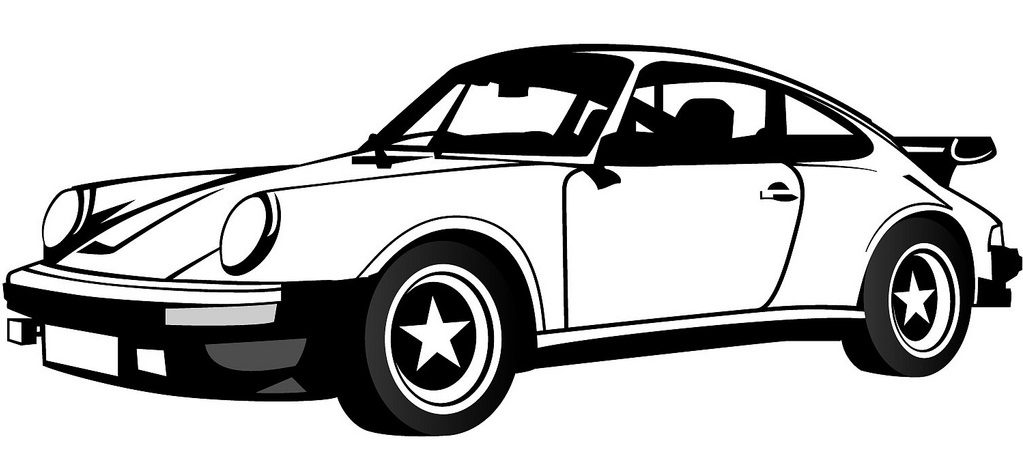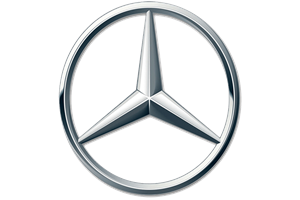A brief history of
Mercedes
Introduction
The car manufacturer Mercedes has made an important impact on the automotive world. In this article we will give a brief but detailed history of the Mercedes marque.
We will look at the origins of Mercedes looking at who, why, where and when Mercedes was founded. We'll look at the design of the iconic Mercedes logo and what are some the more significant Mercedes models.
We'll take a glance at what racing history the Mercedes has and who some of the most important people have been in the history of Mercedes over the years.
Who, where, when and why was
Mercedes founded?
Mercedes-Benz, one of the most renowned and iconic car manufacturers in the world, has a fascinating history that dates back to the late 19th century. The company was founded by Karl Benz and Gottlieb Daimler, two pioneering engineers who revolutionized the automotive industry with their inventions.
Karl Benz, a German engineer, is credited with inventing the first gasoline-powered automobile in 1886. His creation, the Benz Patent-Motorwagen, marked the birth of the modern automobile. Around the same time, Gottlieb Daimler, also a German engineer, was developing his own gasoline engine and patented his designs in 1885 and 1886. These parallel advancements laid the foundation for the establishment of Mercedes-Benz.
The formal merger of Benz & Cie. and Daimler-Motoren-Gesellschaft took place in 1926, creating the company known as Mercedes-Benz. The merger brought together the expertise and technological innovations of both companies under one brand. The name "Mercedes" was derived from the daughter of an Austrian businessman and racing enthusiast, Emil Jellinek, who played a significant role in promoting Daimler's automobiles. The combined company aimed to produce high-quality, luxurious vehicles that would set new standards in design, engineering, and performance.
Mercedes-Benz was founded in Stuttgart, Germany, where the company's headquarters are still located today. The city has become synonymous with automotive excellence, and its rich automotive history continues to influence Mercedes-Benz's commitment to innovation and craftsmanship. From its earliest days, Mercedes-Benz focused on producing automobiles that combined elegance, reliability, and advanced engineering.
The driving force behind the founding of Mercedes-Benz was the desire to create exceptional vehicles that would shape the future of transportation. Karl Benz and Gottlieb Daimler shared a passion for pushing the boundaries of automotive technology and believed in the potential of the automobile to transform the world. Their vision for Mercedes-Benz was to produce vehicles that would not only provide reliable transportation but also deliver a superior driving experience and represent the pinnacle of automotive engineering.
Today, Mercedes-Benz stands as a symbol of luxury, innovation, and engineering excellence. The company's commitment to craftsmanship, cutting-edge technology, and the pursuit of automotive perfection has solidified its position as one of the most prestigious and influential car manufacturers in the world.
How did the
Mercedes logo originate?

How did the Mercedes logo originate?
The Mercedes-Benz logo, with its iconic three-pointed star, has a rich history that is deeply intertwined with the brand's heritage and values. The logo is a symbol of the company's commitment to excellence, innovation, and a relentless pursuit of automotive perfection.
The Mercedes-Benz logo was first introduced in 1909 and has undergone several modifications throughout its history. The three-pointed star represents the brand's ambition to dominate the automotive industry on land, sea, and air. Each point of the star signifies Mercedes-Benz's ability to produce vehicles for these three domains. The logo's design exudes elegance and sophistication, reflecting the brand's focus on luxury and high-quality craftsmanship.
Over the years, the Mercedes-Benz logo has evolved while maintaining its core elements. In the 1930s, the logo was encircled by a laurel wreath, symbolizing the brand's success in racing and its reputation as a champion. In the 1950s, the wreath was removed, leaving the star as the centerpiece, representing Mercedes-Benz's position as a leading automotive brand.
The current version of the logo, introduced in the 2000s, features a refined and minimalist design. The three-pointed star is encased within a silver circle, representing modernity, innovation, and timeless elegance. The logo's sleek and clean lines reflect the brand's commitment to cutting-edge technology and design.
Overall, the Mercedes-Benz logo is not only a visual representation of the brand but also a symbol of its heritage, values, and aspirations. It has become instantly recognizable worldwide, representing the excellence and luxury associated with Mercedes-Benz vehicles.
What are some of the significant
Mercedes models?
Mercedes-Benz, a brand known for its luxury and performance, has produced a wide range of significant models throughout its history. From the early classics to the modern-day powerhouses, Mercedes-Benz has consistently pushed the boundaries of automotive engineering and design.
In the early years of Mercedes-Benz, one of the most significant models was the Mercedes 540K, introduced in the 1930s. This iconic grand tourer featured a supercharged engine and was renowned for its power, elegance, and luxurious amenities. It became a symbol of automotive excellence and remains highly sought after by collectors today.
As the years progressed, Mercedes-Benz continued to innovate and introduce new high-performance models. In the 1960s, the Mercedes-Benz 300SL "Gullwing" made its mark on the automotive world. This iconic sports car featured distinctive upward-opening doors and a powerful engine, making it a true symbol of speed and style. Its sleek design and impressive performance capabilities cemented its status as a legend in the automotive industry.
In the 1980s, Mercedes-Benz introduced the legendary Mercedes-Benz 190E 2.3-16, also known as the "Cosworth." This compact sedan was a collaboration between Mercedes-Benz and Cosworth, a renowned engineering company. The 190E 2.3-16 showcased the brand's commitment to high-performance driving with its sporty design, advanced suspension, and a powerful four-cylinder engine. It was a formidable competitor on the racetrack and left a lasting impact on the sports sedan segment.
In the 21st century, Mercedes-Benz continued to impress enthusiasts with its high-performance models. The Mercedes-AMG GT, introduced in 2014, is a prime example of the brand's dedication to delivering exhilarating driving experiences. This sleek and powerful sports car boasts a handcrafted AMG engine, advanced aerodynamics, and cutting-edge technology. With its aggressive styling and blistering performance, the AMG GT showcases the brand's commitment to delivering top-tier performance vehicles.
Another notable model is the Mercedes-AMG C63, a high-performance version of the Mercedes-Benz C-Class. With its muscular design, sport-tuned suspension, and a formidable V8 engine, the C63 offers thrilling performance on both the road and the track. It combines luxury and speed, providing an exhilarating driving experience for enthusiasts.
Mercedes-Benz has consistently produced a wide range of high-performance models throughout its history. Each vehicle represents the brand's commitment to excellence, luxury, and technological advancement. From the classic 540K to the modern-day AMG GT and C63, these models embody the brand's philosophy of delivering exceptional performance and driving pleasure.

One of Mercedes's Most Iconic Models
Who are some of the most important people in
Mercedes's History
Behind the success of Mercedes-Benz are the visionary individuals who have shaped the brand and contributed to its legacy. From engineers and designers to executives and racing drivers, these individuals have played a crucial role in defining Mercedes-Benz as a symbol of automotive excellence.
One notable figure in Mercedes-Benz history is Karl Benz, one of the founders of the company. In 1886, Benz patented the first gasoline-powered automobile, the Benz Patent-Motorwagen. His groundbreaking invention paved the way for the modern automobile and laid the foundation for Mercedes-Benz as we know it today. Benz's innovative spirit and engineering prowess set the stage for the brand's future success.
Another influential individual in Mercedes-Benz's history is Gottlieb Daimler, another co-founder of the company. Daimler is known for his contributions to the development of the high-speed internal combustion engine. His inventions and technical innovations were instrumental in the advancement of automotive technology, and his collaboration with Benz led to the formation of the Mercedes-Benz brand. Daimler's expertise and entrepreneurial spirit were vital in establishing Mercedes-Benz as a leading manufacturer.
Wilhelm Maybach is another key figure in the history of Mercedes-Benz. Maybach was an engineer and designer who worked closely with Gottlieb Daimler. He played a pivotal role in developing advanced engines and drivetrains for Mercedes-Benz vehicles, including the creation of the first Mercedes engine. Maybach's technical expertise and attention to detail helped shape the performance and reliability of Mercedes-Benz cars.
One of the most influential individuals in the modern era of Mercedes-Benz is Dieter Zetsche. As the former CEO of Daimler AG and head of Mercedes-Benz Cars, Zetsche led the company through a period of significant growth and transformation. Under his leadership, Mercedes-Benz expanded its product lineup, introduced innovative technologies, and achieved record sales figures. Zetsche's strategic vision and commitment to excellence played a crucial role in solidifying Mercedes-Benz's position as a leading luxury automobile brand.
In the motorsport realm, one cannot overlook the contributions of racing drivers such as Juan Manuel Fangio and Lewis Hamilton. Fangio, a five-time Formula One World Champion, achieved great success with Mercedes-Benz in the 1950s, winning multiple championships and showcasing the brand's racing prowess. Hamilton, a seven-time Formula One World Champion, has achieved remarkable success with Mercedes-AMG Petronas Formula One Team, bringing home numerous victories and championships. These drivers, along with others who have represented Mercedes-Benz in various motorsport disciplines, have helped to build the brand's reputation for performance and success on the racetrack.
These individuals, among many others, have played a significant role in shaping the history and success of Mercedes-Benz. From the pioneering inventors to the visionary leaders and accomplished racing drivers, their contributions have propelled the brand forward, solidifying its position as a symbol of automotive excellence, innovation, and performance.

One of the most influential people in the history of Mercedes
Mercedes's Racing History
Mercedes-Benz has a rich history in motorsport, with a legacy that spans across various racing disciplines. The brand's involvement in racing has not only showcased its engineering prowess but has also contributed to its reputation as a manufacturer of high-performance vehicles.
One of the earliest instances of Mercedes-Benz's racing success dates back to the early 1900s when the company participated in the prestigious French Grand Prix. In 1908, Mercedes-Benz driver Christian Lautenschlager secured a victory in the race, demonstrating the brand's early dominance in motorsport. This win marked the beginning of Mercedes-Benz's successful journey in Grand Prix racing.
Mercedes-Benz's racing heritage continued to flourish in the 1930s. The brand's Silver Arrows race cars, known for their distinctive silver livery, became legendary in the motorsport world. Under the leadership of Alfred Neubauer, the team achieved numerous victories, including three consecutive European Championship titles from 1935 to 1937. Drivers such as Rudolf Caracciola and Hermann Lang played a pivotal role in Mercedes-Benz's success during this era.
After a hiatus from racing following World War II, Mercedes-Benz made a triumphant return in the 1950s. The company entered Formula One racing in the 1954 season and quickly established its dominance. Mercedes-Benz driver Juan Manuel Fangio won back-to-back World Championships in 1954 and 1955, solidifying the brand's position as a force to be reckoned with in the sport.
In the 1980s and 1990s, Mercedes-Benz's involvement in motorsport expanded to include the popular Deutsche Tourenwagen Masters (DTM) series. The brand's touring cars, powered by powerful V8 engines, competed against other top manufacturers, and drivers like Klaus Ludwig and Bernd Schneider achieved multiple championship victories, further enhancing Mercedes-Benz's racing pedigree.
In recent years, Mercedes-Benz's motorsport endeavors have centered around Formula One. As the parent company of Mercedes-AMG Petronas Formula One Team, the brand has enjoyed tremendous success in the pinnacle of motorsport. Since the hybrid era in 2014, Mercedes-AMG Petronas has dominated the Formula One World Championship, winning both drivers' and constructors' titles multiple times. Drivers such as Lewis Hamilton and Nico Rosberg have contributed to Mercedes-Benz's remarkable success on the global stage.
Aside from Formula One, Mercedes-Benz has also participated in endurance racing, including the prestigious 24 Hours of Le Mans. The brand's presence in this grueling race has seen notable achievements, including overall victories in the 1950s and class victories in more recent years.
Throughout its racing history, Mercedes-Benz has demonstrated its commitment to pushing the boundaries of performance and innovation. The brand's involvement in various racing disciplines has not only served as a platform to showcase its cutting-edge technologies but has also played a vital role in shaping the development of its road cars. Mercedes-Benz's racing successes have undoubtedly contributed to its reputation as a manufacturer of high-performance vehicles and have solidified its position as a dominant force in the world of motorsport.
Summary
Mercedes-Benz has firmly established itself as a leader in the automotive industry. With a strong focus on luxury, performance, and innovation, Mercedes-Benz has consistently delivered vehicles of exceptional quality and craftsmanship.
Since its inception, Mercedes-Benz has been synonymous with cutting-edge technology and engineering excellence. From the iconic three-pointed star logo to its reputation for safety and comfort, the brand has become a symbol of luxury and sophistication. Over the years, Mercedes-Benz has produced a wide range of models, catering to various segments of the market, including sedans, SUVs, sports cars, and electric vehicles.
Driven by a passion for innovation, Mercedes-Benz has introduced groundbreaking technologies to the automotive world. From the invention of the first gasoline-powered automobile by Karl Benz to the development of advanced safety features like ABS and ESP, the brand has consistently pushed the boundaries of automotive engineering. Moreover, Mercedes-Benz has been at the forefront of electric mobility, with its lineup of electric and hybrid vehicles paving the way for a sustainable future.
With a commitment to performance, Mercedes-Benz has a strong presence in motorsport, competing in prestigious events such as Formula One and endurance racing. Its motorsport endeavors not only showcase the brand's technical expertise but also serve as a testing ground for new technologies that eventually find their way into production vehicles.
With a heritage spanning over a century, Mercedes-Benz continues to shape the automotive industry with its unwavering dedication to excellence, luxury, and innovation. From the iconic Mercedes-Benz sedans to the powerful AMG performance models and cutting-edge electric vehicles, the brand has solidified its position as a benchmark for automotive excellence.
View Mercedes Car Specifications
More Manufacturer Histories.

























